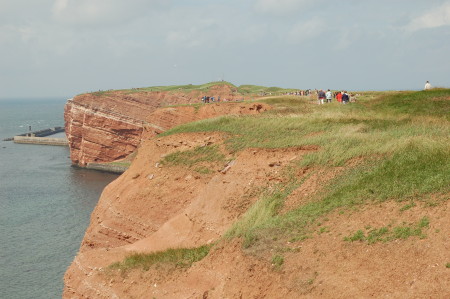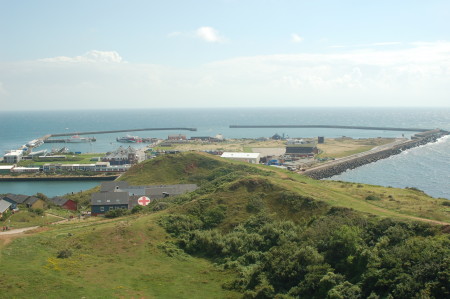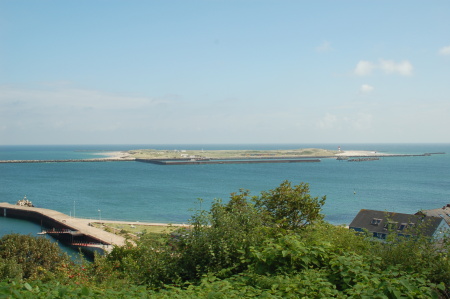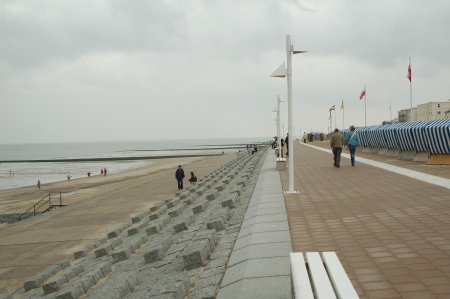We’re back!
First we went a few days to the northern part of Germany, a region called East Friesland. The province of Friesland proper and West Friesland both reside in the Netherlands, and we have spent a lot of time there. The purpose of this trip was to have a look at the German side of the area that shares a lot of the same culture, history and natural beauty. All through this area, on both sides of the border, are very friendly and easy going people.
By historical definition, Friesland extends through Poland, the Baltics and a small part of Russia across the border from Estonia. Friesland also includes a small piece of southern Denmark.
The highlight was trips to two of the nearby islands, Heligoland and Norderney.
Here are some of Heligoland’s cliffs.

On both sides of the Dutch/German border the old languages of Fries and Low German are still spoken a bit, making it interesting for language buffs. The common greeting there is the Low German or Fries ‘Moin’. By itself it’s a greeting, but if you literally translate it it can mean either ‘Good’ or ‘Day’. That means you sometimes hear people saying ‘Moin, Moin’, meaning ‘Good Day’. It’s a very funny word and sometimes bothers people who believe language must be something precisely defined, including many of their fellow countrymen. This is one of the reasons Low German didn’t really survive as a language, because it is so loosely defined and very fragmented with lots of different dialects.
Fries is interesting as a language because it’s the only language spoken in modern times that has elements of old English and Scots within it. An example of how closely related to English it is, is the Fries word ‘tjiis’. This means cheese and it’s pronounced the same in both languages. There is a Fries saying that goes ‘Bread butter and Green Cheese, Good English, Good Fries’. If you use a search engine like Google, you can find the Fries language version of this that’s spelled differently but pronounced the same.
Very little English is spoken in this part of Germany, making it a bit of a challenge because our German is very limited. It was only a three hour drive from Amsterdam.
Here is Heligoland’s harbor.

Here is a picture of the dunes next to the island.

This is the beach on the north shore of Norderney.

On both islands, as well as the nearby mainland, there was loads of nature to be had. The area is great for bird watchers. As any northern European will tell you, usually without any prompting, the area is not good if you want a sun vacation. The beaches were gorgeously clean and lightly used. Walking along the sand you can feel fresh shells crunching under your feet that have recently washed up. Not a speck of litter to be found anywhere. While the temperature was very pleasant, it did rain from time to time while we were there.
Heligoland is a duty free zone, and is a popular destination for people wanting to stock up on their tax free allowances. Tobacco and alcohol are significantly cheaper there, and the cost of the €30 boat ticket can be completely recovered if you return with your full allowances. This made the island a little on the commercial side, and also meant the boat schedule didn’t allow for much sightseeing because most people weren’t there for that purpose. The boat trip was 2 hours each way through rough seas. Each table on the boat sat about 4 people and had a stack of 10 barf bags, which a few people were certainly using.
Norderney was a nicer island to visit, with a shorter and smoother boat trip. It was also a much more popular and busier tourist destination.
As well as the islands we drove through the villages on the mainland which were also pretty and friendly.


